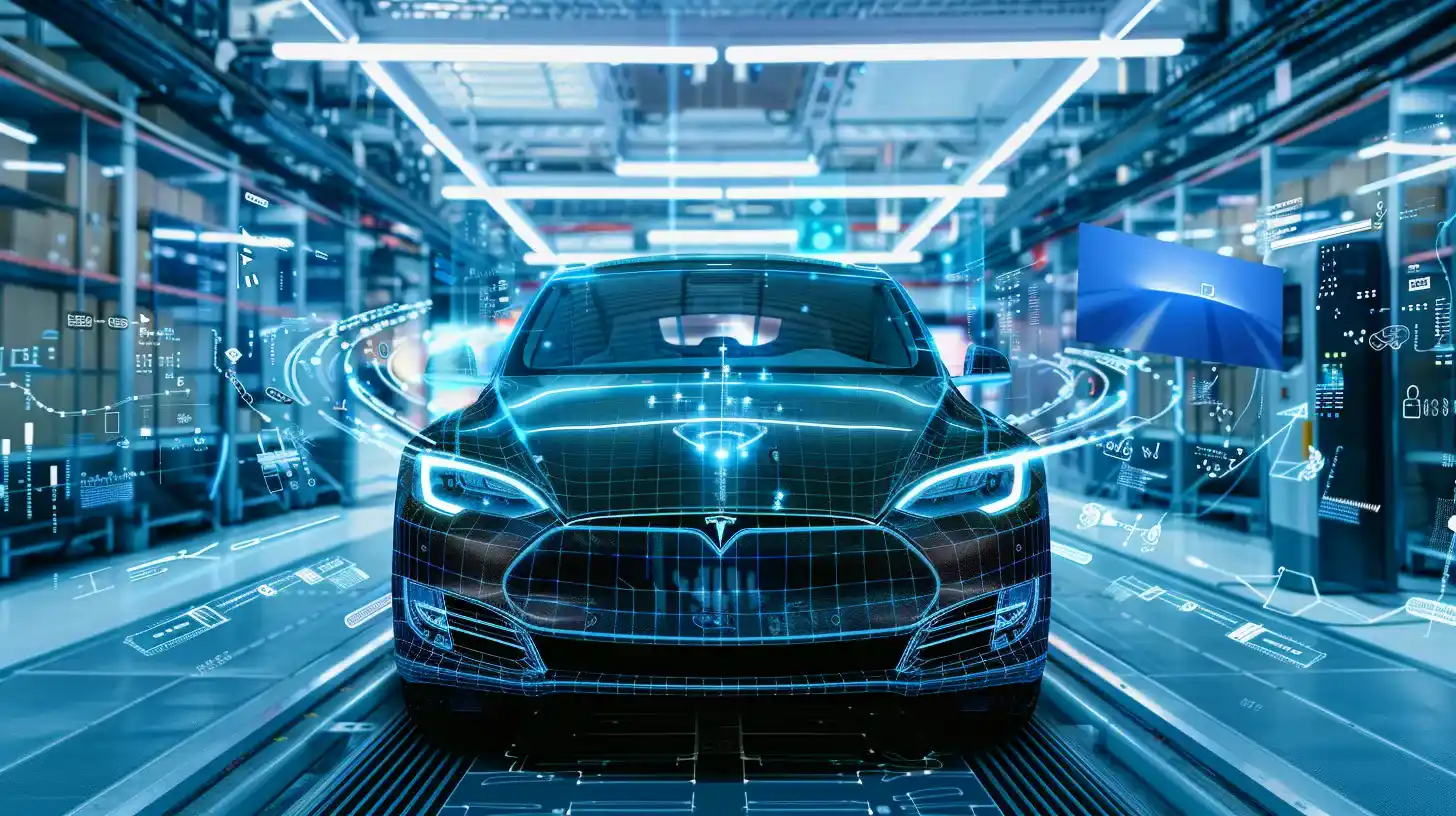Table of Contents
Tesla AI Supercomputer: The latest earnings call with Tesla investors took an unexpected turn when Elon Musk floated a mind-bending idea: utilizing the unused processing power of millions of Tesla vehicles to create a colossal distributed Tesla AI Supercomputer network. Imagine an Amazon Web Services (AWS) powered by Teslas, where parked cars become the building blocks of a global supercomputer.
While the concept sparks the imagination, experts caution against mistaking futuristic fantasy for practical reality. Let’s delve into the potential of this “dorm room bong sesh of an idea,” as one commentator phrased it, and explore the roadblocks that might prevent it from hitting the road.
Powering the Future with Parked Tesla AI Supercomputer
Musk envisions a future with 100 million Teslas, each harboring a dormant wellspring of computational power. By harnessing this collective might during idle periods, he proposes creating a distributed network capable of running complex AI models. The possibilities are tantalizing: a vast, decentralized computing resource that could revolutionize Tesla AI Supercomputer development.
However, translating this vision into reality presents significant challenges.

The Roadblocks on Musk’s AI Highway
The biggest hurdles lie in the very nature of cars. Unlike dedicated servers, Teslas rely on batteries or the grid for power, a cost ultimately borne by the vehicle owner. Additionally, connectivity becomes a crucial factor. Distributed computing demands consistent, high-speed connections, a challenge considering the ever-moving nature of cars.
Experts like Sam Anthony, former CTO of Perceptive Automata, highlight these concerns. He emphasizes the limitations of car-based nodes, particularly for real-time Tesla AI Supercomputer tasks requiring constant connectivity. Musk’s vision hinges on utilizing parked vehicles, but coercing users to participate in a distributed network without clear incentives might prove unpopular.
From SETI@home to Tesla@home: A Distributed Computing Dream?
The concept of harnessing idle computing power isn’t entirely new. Projects like SETI@home successfully leveraged distributed networks of personal computers for scientific research. Could Tesla follow suit and create a “Tesla@home” initiative?
The answer hinges on scalability. As Phil Koopman, a computer engineering professor, points out, geographically dispersed nodes present a significant challenge in coordinating large-scale computing tasks. While parked, a plugged-in Tesla AI Supercomputer with reliable Wi-Fi connections might offer a potential solution, but scaling this infrastructure to a level that rivals established data centers remains a formidable obstacle.
The Reality Check: Hype vs. Practicality
Musk is renowned for his audacious visions, painting a future where self-driving Teslas generate passive income for their owners. However, translating these ideas into reality often proves more difficult. While the concept of a Tesla AI Supercomputer is undeniably intriguing, the technical and logistical hurdles are substantial.
For now, this remains an interesting thought experiment. As Koopman concludes, “cool ideas” often struggle to translate into practical applications. Only time will tell if Tesla’s journey toward a distributed Tesla AI Supercomputer network becomes a technological marvel or another case of visionary hype outpacing practical implementation.
The Driver’s Seat: User Concerns and Ethical Implications
Musk‘s proposal raises questions beyond technical feasibility. Here’s a deeper dive into potential user concerns and ethical considerations:

- Privacy and Security: Would Tesla collect data on car usage patterns during compute cycles? What safeguards would be in place to prevent unauthorized access or misuse of user data?
- Battery Drain and Wear: Distributing computing tasks could potentially impact battery life and overall vehicle health. Would Tesla offer compensation or extended warranties to offset these concerns?
- User Control and Transparency: Would owners have the option to opt out of the distributed network? How would users be informed about the type of AI tasks their vehicle might be contributing to?
- The Ethics of a Centralized Network: A Tesla-controlled supercomputer raises questions about centralized control of AI development. Who would determine the priorities and applications of this vast computing power?
These concerns highlight the need for a transparent dialogue between Tesla and its customers. Building trust and ensuring user autonomy will be crucial for garnering public support for such a radical concept.
Alternative Avenues: Exploring Synergies
While a large-scale, car-based network might be far-fetched, there are potential avenues for exploring synergies between Tesla’s vehicles and Tesla AI Supercomputer development:
- Edge Computing with Self-Driving Cars: Self-driving Teslas already possess significant processing power. This could be harnessed for localized AI tasks, such as real-time traffic analysis or obstacle detection, improving overall driving performance.
- Data Collection and Training: Anonymized data collected from Tesla vehicles could provide valuable insights for training AI models related to self-driving technology or smart city infrastructure development.
These possibilities offer a more realistic path forward, leveraging Tesla’s existing technology to contribute to the advancement of AI in a responsible and user-centric manner.
Conclusion: A Spark for Innovation
Elon Musk’s “dorm room bong sesh” idea, while perhaps impractical in its current form, has sparked a vital conversation about the future of distributed computing and the potential role of electric vehicles within the AI landscape. As technology evolves and the conversation matures, the idea of leveraging idle car computing power might not be entirely out of the question.
However, the path forward demands a focus on user trust, ethical considerations, and exploring more practical, user-centric applications. Only then can the dream of a Tesla-powered supercomputer become a reality that benefits both innovation and the individuals behind the wheel.